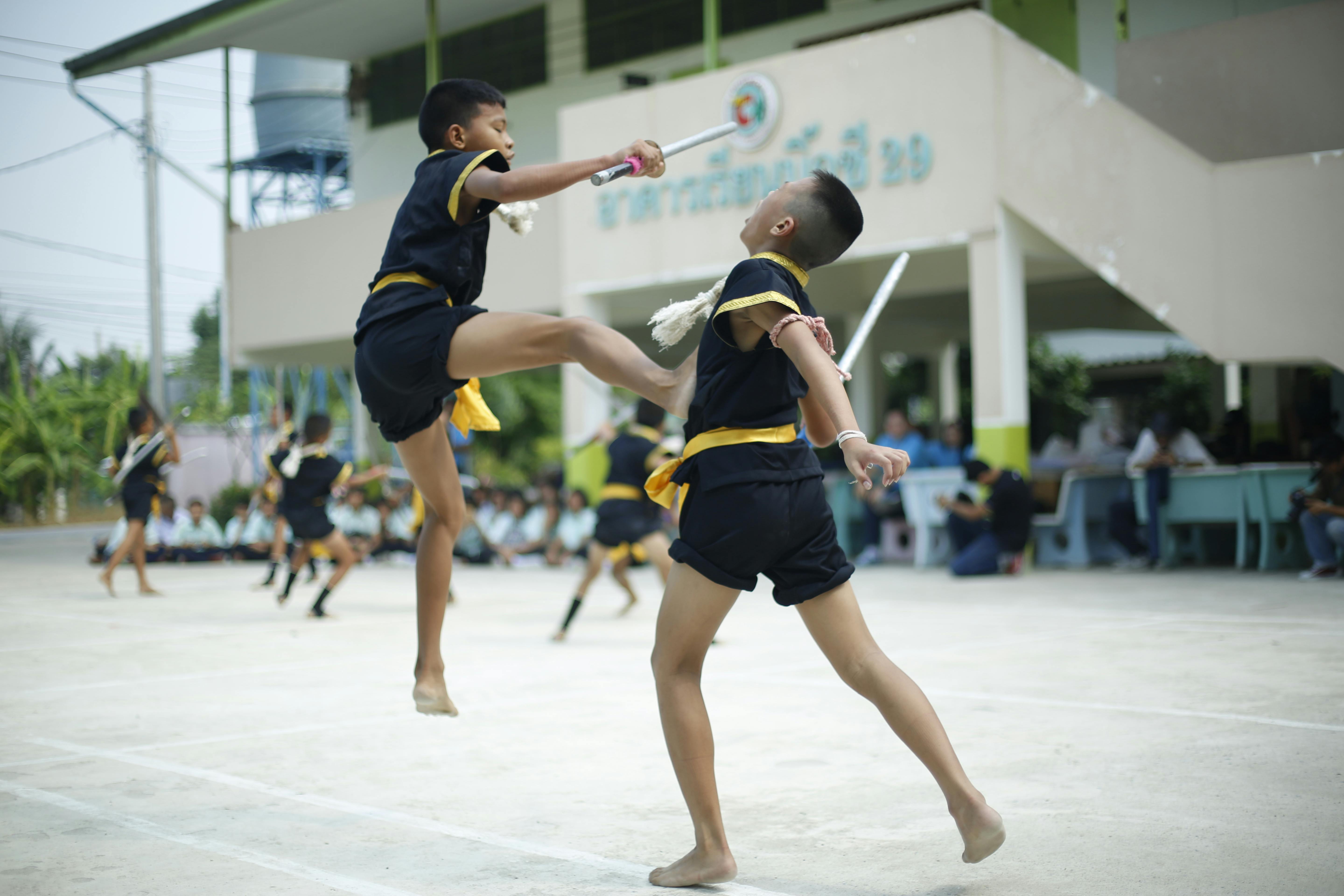philippine martial arts
Among the most popular and influential martial arts practiced today are fighting styles that hail from the Philippines, including Kali and Escrima (or Eskrima, all of which are different names for a very similar group of overlapping martial disciplines). Philippine martial arts are unique in their emphasis on practicality, with little ceremony other than what is effective. This was necessitated by the violent history of the Philippines, marked both by conflicts between local tribes and with great international powers, such as Spain and the United States. Filipino martial arts incorporates both weapon training, particularly with sticks and blades, and empty-handed training under the philosophy that weapons are simply an extension of the body. Another unique concept in Filipino martial arts is that anything can be used as a weapon, from a dagger or knife to a rolled up newspaper or umbrella. This has given Filipino martial arts significant cultural traction and impact everywhere from Hollywood to the American Special Forces, which I’ll talk about a bit later. But first, the weapons and techniques behind the Filipino martial arts.
Filipino martial arts weapons
Unarmed (Because hey, your body is a weapon too):
In unarmed Kali or Escrima, any part of the body can be used as a weapon. Combat involves a myriad of punches, kicks, elbows, knees, head butts, finger strikes, grapples, blocks, grapples, disarming techniques, forearm strikes, palm strikes, and even bites. It’s all fair game, because hey, your body is a weapon too.
blunt weapons
Kali Sticks / Escrima Sticks:
In Kali and Escrima, sticks are commonly used weapons. Among these are:
Staff: A short Kali stick, usually made of flexible rattan.
and the Bangkaw: a longer stick or staff, often made of bamboo.
Makeshift weapons such as pens, umbrellas, staffs or even rolled up newspapers and magazines can be used as Kali and Escrima staffs! Fundamentally, there is little difference between using a newspaper to fight or a fight, so similar techniques apply to both.
sharp kali weapons
In Kali and Escrima, bladed weapons are of fundamental importance, as a substantial part of the Philippine martial culture is a bladed weapon culture. Knives, of all shapes and sizes, are common and normal fixtures of life, used for everything from cutting overgrown vegetation, cutting through fruit or meat, or impaling an adversary. This brings up one of the key differences between Filipino martial arts and other weapon-based fighting systems, such as Japanese kendo, Okinawan kobuto, or European swordsmanship: although no one walks around with katanas and broadswords anymore, people he still carries pocket knives. and machetes and other types of knives, which one learns to defend against and wield through the study of Filipino martial arts. This makes Kali or Escrima particularly practical and useful martial arts to learn about.
Dagger – A common bladed weapon in Filipino martial arts. Traditional varieties include gunong, punyal, and barong.
Folding butterfly knife: called Balisong
Espadas: Espada in Spanish, and traditional varieties include the kampilan and pinuti
Machete: Traditionally called the Golok
Spear: Called the sibat
History and Influence of Kali and Escrima/Eskrima
Kali martial arts began informally long before the arrival of the Spanish in the Philippines, as tribes needed a means of defending themselves against other tribes, whether on their island or another. It is said that there are as many styles of Kali as there are islands in the Philippines. Kali may well have originally been influenced by similar Indian stick and sword fighting styles, such as Silambam, which also involves stick fighting.
Once the Spanish invaded and colonized the Philippines, Kali was outlawed and suppressed. In return, the Filipinos began incorporating it into their dance rituals, allowing them to pass on cultural knowledge and fighting techniques without meeting the wrath or even attention of the settlers.
Kali martial arts developed during the colonial period through bloody trial and error as successive Filipino rebellions shook Spanish rule. As each rebellion was put down, the Filipino people re-evaluated their martial art, taking out what didn’t work and improving what did.
Today, various systems of Kali/Eskrima are taught, with most teaching weapon training, striking, grappling, throwing, and takedown. Kali is geared towards teaching lightning-fast movement, efficient footwork, and practical self-defense.
In popular and military culture, Kali martial arts have also been influential. It is used by the US Special Forces, by the Russian Spetznaz and also by the Indian Special Forces. Hollywood movies have also portrayed Kali, from brief glimpses in Bruce Lee’s Enter the Dragon to fuller appearances in The Bourne Series with Matt Damon, Mission Impossible 4 with Tom Cruise, and the Star Wars prequel trilogy.



